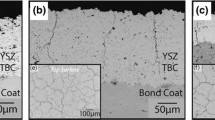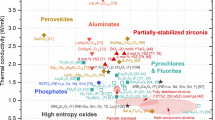Abstract
To investigate the formation and development characteristics of the white layer on a gun exposed to erosive and high-temperature propellant gas, an experiment was conducted, and a transient model comprising chemical reactions was established. The numerical results showed a close agreement with the experiment, with a maximum error of 8%. The results suggest that the development of the white layer is primarily influenced by surface carburization under experimental conditions. Moreover, the carbon content and thickness of the white layer monotonically increase, displaying a logarithmic relationship with erosion time. The carbon content is the highest on the surface and decreases rapidly with depth. Furthermore, the growth rate of the white layer is found to correlate positively with the temperature of the propellant gas. When the temperature approaches the melting point of cementite, the surfaces of the samples become softened, leading to an enhanced diffusion rate of carbon to the deep layers. This phenomenon promotes cementite formation, accelerating the white layer’s development.













Similar content being viewed by others
References
Akcan S, Shah WS, Moylan SP, Chandrasekar S, Chhabra PN, Yang HTY (2002) Formation of white layers in steels by machining and their characteristics. Metall Mater Trans A 33:1245–1254. https://doi.org/10.1007/s11661-002-0225-z
Barry J, Byrne G (2002) TEM study on the surface white layer in two turned hardened steels. Mater Sci Eng A 325:356–364. https://doi.org/10.1016/S0921-5093(01)01447-2
Dwivedi D, Lepková K, Becker T (2017) Carbon steel corrosion: a review of key surface properties and characterization methods. RSC Adv 7:4580–4610. https://doi.org/10.1039/C6RA25094G
Abdenour S, Linda A, Oualid C, Ali B, Salah LM, Hamid D, Francisco C (2021) Influence of the carburization time on the structural and mechanical properties of XC20 steel. Mater Res Express 8:085604. https://doi.org/10.1088/2053-1591/ac1ece
Duan CZ, Zhang FY, Kong WS (2015) Numerical analysis on regular polygon angle-spiral liners design in a ball mill. J Mech Eng 51(17):194–202. https://doi.org/10.3901/JME.2015.17.194
Attanasio A, Umbrello D, Cappellini C, Rotella G, M'Saoubi R (2012) Tool wear effects on white and dark layer formation in hard turning of AISI 52100 steel. Wear 286-287:98–107. https://doi.org/10.1016/j.wear.2011.07.001
Li JG, Umemoto M, Todaka Y, Tsuchiya K (2007) A microstructural investigation of the surface of a drilled hole in carbon steels. Acta Mater 55:1397–1406. https://doi.org/10.1016/j.actamat.2006.09.043
Hossain R, Pahlevani F, Witteveen E, Banerjee A, Joe B, Prusty BG, Dippenaar R, Sahajwalla V (2017) Hybrid structure of white layer in high carbon steel-formation mechanism and its properties. Sci Rep 7:13288. https://doi.org/10.1038/s41598-017-13749-7
Ramesh A, Melkote SN (2008) Modeling of white layer formation under thermally dominant conditions in orthogonal machining of hardened AISI 52100 steel. Int J Mach Tools Manuf 48(3-4):402–414. https://doi.org/10.1016/j.ijmachtools.2007.09.007
Wei YH, Yu XF, Su Y, Shen XY, Xia YZ, Yang WW (2021) Effect of residual stress and microstructure evolution on size stability of M50 bearing steel. J Mater Res Technol 10(1):651–661. https://doi.org/10.1016/j.jmrt.2020.12.060
Zhang FY, Li K, Duan CZ (2021) Modeling of critical cutting speed of white layer formation in the hard-cutting process. Int J Adv Manuf Tech 119:1059–1070. https://doi.org/10.1007/s00170-021-08304-8
Lawton B (2001) Thermo-chemical erosion in gun barrels. Wear 251:827–838. https://doi.org/10.1016/S0043-1648(01)00738-4
Fan W, Gao P (2021) A review on erosion-reducing additive materials to extend the lifespan of gun barrels. J Mater Sci 56:19767–19790. https://doi.org/10.1007/s10853-021-06558-x
Li XL, Zang Y, Lian Y, Ma MY, Mu L, Qin Q (2021) An interface shear damage model of chromium coating/steel substrate under thermal erosion load. Def Technol 17(2):405–415. https://doi.org/10.1016/j.dt.2020.02.002
Zou LB, Yu CG, Feng GB, Zhong JL, Lv Y (2020) Establishment of erosion model of gun steel material and study on its erosion performance. J Mech Sci Technol 34:2019–2026. https://doi.org/10.1007/s12206-020-0423-x
Susantez Ç, Caldeira AB (2022) Heat transfer modelling and simulation of a 120 mm smoothbore gun barrel during interior ballistics. Def Sci J 72(1):30–39. https://doi.org/10.14429/dsj.7
Suyadnya KA, Tarwidi D, Setiawan EB, Umbara RF (2019) Numerical modeling of heat transfer in gun barrel with experimental validation. Int J Eng Technol 8:62–66. https://doi.org/10.14419/ijet.v8i1.9.26369
Wang ZM, Hu CD, Wang YX, Lu HC, Li JS, Dong H (2021) Failure mechanism of gun barrel caused by peeling of Cr layer and softening of bore matrix. Metals 11(2):348. https://doi.org/10.3390/met11020348
Bachniak D, Kuziak R, Szeliga D, Pietrzyk M (2021) Mean field model of phase transformations in steels during cooling, which predicts evolution of carbon concentration in the austenite. Metall Res Technol 118(4):411. https://doi.org/10.1051/metal/2021046
Stiefel L (1992) Gun propulsion technology. Yang BX, Yuan YX translated. The Publishing House of Ordnance Industry, Nanjing.
Cote PJ, Rickard C (2000) Gas–metal reaction products in the erosion of chromium-plated gun bores. Wear 241(1):17–25. https://doi.org/10.1016/S0043-1648(00)00311-2
Cote PJ, Lee SL, Todaro ME, Kendall G (2003) Application of laser pulse heating to simulate thermomechanical damage at gun bore surfaces. J Press Vessel Technol 125(3):335–341. https://doi.org/10.1115/1.1593697
Milstein F, Fang HE, Marschall J (1994) Mechanics and energetics of the Bain transformation. Philos Mag A 70(4):621–639. https://doi.org/10.1080/01418619408242252
Kamdar MH, Campbell A, Brassard T (1978) A metallographic study of white layers in gun steel. ARLCB-TR-78012. https://apps.dtic.mil/sti/pdfs/ADA060604.
Kamdar MH, Venables JD (1984) Characterization of surface layers in gun barrels. ARLCB-TR-84041. https://apps.dtic.mil/sti/citations/ADA151424.
Fisher RM, Szimae A, Kamdar MH (1983) Metallographic studies of erosion and thermal cracking of cannon tubes. ARLCB-TR-83022. https://apps.dtic.mil/sti/citations/ADA135816.
Wu B, Zheng J, Luo TF, Wang T, Zhou YC, Huang X (2020) Damage and fracture of gun barrel under wear-fatigue interaction. J Phys Conf Ser 1507: 102034. https://doi.org/10.1088/1742-6596/1507/10/102034.
Ward JR, Brosseau TL, Kaste RP, Stobie IC, Bensinger B (1981) Erosivity of LOVA propellants. ARBRL-TR-02368. https://apps.dtic.mil/sti/citations/ADA106081.
Jaramaz S, Micković D, Elek P (2010) Determination of gun propellants erosivity: experimental and theoretical studies. Exp Therm Fluid Sci 34(6):760–765. https://doi.org/10.1016/j.expthermflusci.2010.01.005
Rezgui N, Micković DM, Živković SŽ, Ivanović IB (2019) Experimental and numerical analysis of thermo-chemical erosion in gun steel. Therm Sci 23(2A):599–612. https://doi.org/10.2298/TSCI180608194R
Nelson CW, Ward JR (1981) Calculation of heat transfer to the gun barrel wall. ARBRL-MR-03094. https://apps.dtic.mil/sti/citations/ADA100265.
Weinacht P, Conroy PJ (1996) A numerical method for predicting thermal erosion in gun tubes. ARL-TR-1156. https://apps.dtic.mil/sti/citations/ADA311443.
Conroy PJ, Weinacht P, Nusca MJ (1997) 120-mm gun tube erosion including surface chemistry effects. ARL-TR-1526. https://apps.dtic.mil/sti/citations/ADA338048.
Conroy PJ, Nusca MJ, Chabalowski C, Anderson W (2001) Gun tube surface kinetics and implications. ADP012467. https://apps.dtic.mil/sti/citations/ADP012467.
Chung DY, Shin N, Oh M, Yoo SH, Nam S (2007) Prediction of erosion from heat transfer measurements of 40mm gun tubes. Wear 263(1-6):246–250. https://doi.org/10.1016/j.wear.2006.12.065
Sopok S, Rickard C, Dunn S (2005) Thermal–chemical–mechanical gun bore erosion of an advanced artillery system part one: theories and mechanisms. Wear 258(1-4):659–670. https://doi.org/10.1016/j.wear.2004.09.031
Sopok S, Rickard C, Dunn S (2005) Thermal–chemical–mechanical gun bore erosion of an advanced artillery system part two: modeling and predictions. Wear 258(1-4):671–683. https://doi.org/10.1016/j.wear.2004.09.030
Li XL, Zang Y, Mu L, Yong L, Qin Q (2020) Erosion analysis of machine gun barrel and lifespan prediction under typical shooting conditions. Wear 444-445:203177. https://doi.org/10.1016/j.wear.2019.203177
Sun XW, Yang HB, Mi T (2020) Heat transfer and ablation prediction of carbon/carbon composites in a hypersonic environment using fluid-thermal-ablation multiphysical coupling. Int J Aerospace Eng:9232684. https://doi.org/10.1155/2020/9232684
Nusca M, McQuaid M, Anderson W (2000) Numerical simulation of an open-air plasma jet using a multi-species reacting flow CFD code. AIAA 2000-2675. https://doi.org/10.2514/6.2000-2675.
Tsang W, Hampson RF (1986) Chemical kinetic data base for combustion chemistry. Part I. Methane and Related Compounds. J Phys Chem Ref 15:1087–1279. https://doi.org/10.1063/1.555759
Kaspersma JH, Shay RH (1981) Carburization of iron by CO-based mixtures in nitrogen at 925 °C. Metall Mater Trans B 12:77–83. https://doi.org/10.1007/BF02674760
Zhou YH, Wang SC (1990) Practical two-phase flow ballistics. The Publishing House of Ordnance Industry Nanjing
Author information
Authors and Affiliations
Contributions
Wenhao Zhang: model establishment, simulation calculation, data processing, and article writing. Yonggang Yu: experiment preparation, theoretical guidance, and article proofreading.
Corresponding author
Ethics declarations
Competing interests
The authors declare no competing interests.
Additional information
Publisher’s note
Springer Nature remains neutral with regard to jurisdictional claims in published maps and institutional affiliations.
Appendix
Appendix
1.1 Notation
- a(S):
-
coefficient related to carbon content
- a j(M):
-
coefficient of the effect of M on the third-body reaction j
- \({A}_j^f\) :
-
pre-exponential factor of reaction j
- A surf :
-
area of the specimen surface
- c g :
-
concentration of the gas mixture
- c i :
-
concentration of component i
- c surf − Fe :
-
concentrations of Fe on the surface
- \({c}_{\textrm{surf}-F{\textrm{e}}_3C}\) :
-
concentrations of Fe3C on the surface
- C p :
-
specific heat capacity
- C pf :
-
specific heat capacity of total fluid component
- C pi :
-
specific heat capacity of component i
- C ps :
-
specific heat capacity of steel
- d :
-
thickness of sample
- \({D}_{c_0}\) :
-
initial diffusion coefficient of carbon
- D C :
-
diffusion coefficient of carbon
- D i :
-
diffusion coefficient of components except for carbon
- E f :
-
activation energy of reaction
- E c :
-
activation energy of the carbonization
- h g :
-
convection heat transfer coefficient between the gas and the wall
- h i :
-
enthalpy of reactant/generator i
- h w :
-
thickness of the white layer
- H j :
-
reaction heat of reaction j
- k eff :
-
equivalent thermal conductivity coefficient of samples
- k f :
-
thermal conductivity coefficient of total fluid component
- k g :
-
propellant gas thermal conductivity coefficient
- k i :
-
thermal conductivity coefficient of component i
- \({k}_j^f\) :
-
reaction rate constant of reaction j
- k s :
-
thermal conductivity coefficient of steel
- M i :
-
molar mass of component i
- n C :
-
total quantity of C element per unit area inside the sample
- p g :
-
gas pressure around the sample
- Pr:
-
Plante number
- Q react :
-
heat released/absorbed in reactions
- R 0 :
-
universal gas constant
- R i :
-
chemical reaction rate
- \({R}_{F{e}_3C}\) :
-
Fe3C generation rate in the sample
- r j :
-
reaction rate of reaction j
- Re:
-
Reynolds number
- S :
-
carbon content of the sample
- t :
-
time in calculation
- T :
-
reaction temperature
- T g :
-
temperature of the gas
- T w :
-
surface temperature of the specimen
- v ij :
-
stoichiometric number of component i in reaction j
- v D :
-
carbon diffusion rate on the surface
- V r :
-
cell volume
- x :
-
coordinate in calculation
- θ f :
-
volume fraction of total fluid component
- θ i :
-
volume fraction of component i
- θ s :
-
volume fraction of steel
- ρ :
-
density
- ρ f :
-
density of total fluid component
- ρ s :
-
density of steel
- ω i :
-
mass fraction of component i
Rights and permissions
Springer Nature or its licensor (e.g. a society or other partner) holds exclusive rights to this article under a publishing agreement with the author(s) or other rightsholder(s); author self-archiving of the accepted manuscript version of this article is solely governed by the terms of such publishing agreement and applicable law.
About this article
Cite this article
Zhang, W., Yu, Y. Study on the formation and development of the white layer in the erosive propellant gas. Int J Adv Manuf Technol 128, 243–255 (2023). https://doi.org/10.1007/s00170-023-11875-3
Received:
Accepted:
Published:
Issue Date:
DOI: https://doi.org/10.1007/s00170-023-11875-3




